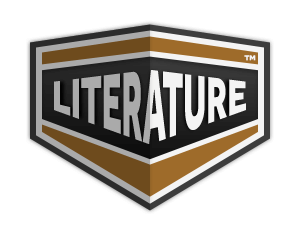About Coal
"About Coal" by Elizabeth Gordon offers an insightful exploration into the significance of coal as a natural resource. The book delves into the formation, extraction, and uses of coal, while also addressing its economic importance and environmental implications. Through accessible language and engaging illustrations, Gordon aims to educate readers about coal's role in energy production and its impact on society and the planet. This informative work serves as both a resource for understanding coal's multifaceted nature and a reflection on the balance between industry and sustainability.
“Down in a coal mine underneath the ground, Where a ray of sunshine never can be found, Digging dusky diamonds all the year around Down in a coal mine underneath the ground,” sang the boy named Billy as he put more coal on Somebody’s fire. “Where did you dig up that old coal-miner’s chantey, Billy Boy?” asked Somebody. “Bob White’s great-grandfather sings it sometimes in the funniest quivery old voice ever--” said the boy named Billy. “He used to be a foreman in a coal-mine in Pennsylvania when he was young, so Bob says. What’s a Chantey, please? I thought it was just a funny old song.” “A Chantey is a song that workmen sing as they work, and make up for themselves,” said Somebody. “Sometimes they have a stanza to start with and then everybody adds a little and after a time it takes on the character of the men who sing it. The men who work in the woods, and the river men, especially those of Canada, have wonderful Chanteys.” “It’s very interesting,” said Billy, “why do they call coal ‘dusky diamonds’ in their chantey?” “Because both coal and diamonds are carbon,” said Somebody, “you knew that, Billy.” “Guess I did,” said Billy, giving the fire an extra poke, “only I didn’t stop to think. But I don’t believe I know just exactly what makes them after all.” “In the case of coal--pressure,” said Somebody. “This old world of ours has been a long time in the making; at some time in its history dense forests, which had been centuries in growing, were crushed and buried by some disturbance of the earth and under the mountains of earth and rocks were pressed into a rock-like substance composed of carbon, oxygen, nitrogen, and hydrogen, with sulphur and silica added. The carbon and gases burn up, and what is left is what you take away in the form of ashes before you go to school mornings, like the good boy that you are.” “Is coal everywhere under us then?” asked the boy named Billy. “Probably not,” answered Somebody. “It is usually found in streaks, very likely because there was much open country where no forests grew. Then, too, the moving glacier or flood or whatever it was that destroyed the forests may have taken them a long way from home before it buried them.” “The coal we burn in the furnace is not like the sort that you burn in your grate,” said the boy named Billy. “The Anthracite, or hard coal which is used in furnaces,” said Somebody, “is the kind that has been under most pressure and is found at a greater depth than the Bituminous or soft coal which is found nearer the surface.” “Who was the first to find out that coal would burn?” asked Billy. “Nobody knows,” said Somebody. “Perhaps some little mother whose babies were cold and chilly found some black rocks and used them for a fireplace to hold the little sticks which she was burning to cook breakfast over, and found that the stones also burned.” “I’ll bet that’s right,” said Billy. “I can just see the picture. What kind of mother would she have been?” “Anglo-Saxon,” said Somebody, “as they were the first to use it as a fuel. They have been known to have used coal since 842 A. D.” “As useful as coal itself is, its derivatives are more so,” went on Somebody. “From coal tar is made so many articles of daily use that it would be impossible to tell you about them all.” “Old King Coal,” sang Billy. “Thanks, Somebody--I’m off for a swift skate on the ice this morning!”
Translation
Translate and read this book in other languages:
Select another language:
- - Select -
- 简体中文 (Chinese - Simplified)
- 繁體中文 (Chinese - Traditional)
- Español (Spanish)
- Esperanto (Esperanto)
- 日本語 (Japanese)
- Português (Portuguese)
- Deutsch (German)
- العربية (Arabic)
- Français (French)
- Русский (Russian)
- ಕನ್ನಡ (Kannada)
- 한국어 (Korean)
- עברית (Hebrew)
- Gaeilge (Irish)
- Українська (Ukrainian)
- اردو (Urdu)
- Magyar (Hungarian)
- मानक हिन्दी (Hindi)
- Indonesia (Indonesian)
- Italiano (Italian)
- தமிழ் (Tamil)
- Türkçe (Turkish)
- తెలుగు (Telugu)
- ภาษาไทย (Thai)
- Tiếng Việt (Vietnamese)
- Čeština (Czech)
- Polski (Polish)
- Bahasa Indonesia (Indonesian)
- Românește (Romanian)
- Nederlands (Dutch)
- Ελληνικά (Greek)
- Latinum (Latin)
- Svenska (Swedish)
- Dansk (Danish)
- Suomi (Finnish)
- فارسی (Persian)
- ייִדיש (Yiddish)
- հայերեն (Armenian)
- Norsk (Norwegian)
- English (English)
Citation
Use the citation below to add this book to your bibliography:
Style:MLAChicagoAPA
"About Coal Books." Literature.com. STANDS4 LLC, 2025. Web. 22 Feb. 2025. <https://www.literature.com/book/about_coal_5170>.








Discuss this About Coal book with the community:
Report Comment
We're doing our best to make sure our content is useful, accurate and safe.
If by any chance you spot an inappropriate comment while navigating through our website please use this form to let us know, and we'll take care of it shortly.
Attachment
You need to be logged in to favorite.
Log In